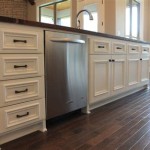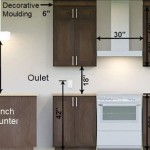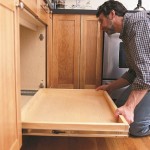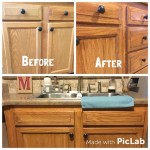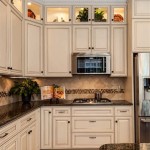DIY Spray Paint Kitchen Cabinets: A Step-by-Step Guide
Transforming your kitchen with a fresh coat of paint is a popular and cost-effective DIY project that can dramatically alter the look and feel of your space. Spray painting kitchen cabinets offers a smooth, even finish and can be done in a day or two, depending on the size of your kitchen and the amount of prep work required. This article will provide a step-by-step guide on how to achieve professional-looking results with this technique.
1. Preparation is Key
The success of your spray paint project hinges on proper preparation. This involves cleaning, sanding, and masking to ensure a smooth, even finish that adheres well to the cabinet surfaces.
Start by thoroughly cleaning the cabinets with a degreaser to remove any grease, oil, or dirt. Use a mild soap and water solution for general grime removal, followed by a good rinse. Allow the cabinets to dry completely before proceeding.
Next, sand the cabinet surfaces with fine-grit sandpaper (120-180 grit). This step helps to create a slightly rough surface for the paint to adhere to. Focus on removing any imperfections, scratches, or glossiness. Ensure all surfaces are smooth and even.
Once the sanding is complete, use a tack cloth to remove any dust particles. This will prevent imperfections in the final paint finish. Finally, protect surrounding areas with painter's tape, plastic sheeting, or drop cloths to avoid any accidental spray paint overspray.
2. Selecting the Right Spray Paint
Choosing the right spray paint is crucial for achieving a durable and aesthetically pleasing finish. Consider these factors when selecting your spray paint:
1.
Type:
Opt for a high-quality spray paint specifically designed for kitchen cabinets, as it will offer superior durability and resistance to moisture, heat, and stains. Look for paints labeled as "cabinet grade" or "kitchen-grade." 2.Finish:
The finish of your spray paint will determine the final look of your cabinets. Choose a matte, semi-gloss, or gloss finish depending on your desired aesthetic. Matte finishes provide a subtle, less reflective look, while gloss finishes offer a high-shine and more polished appearance. 3.Color:
Select a color that complements your kitchen's decor and style. Consider using a color wheel to determine complementary hues or stick with classic neutral tones for a timeless look. 4.Primer:
If the cabinets have a dark color or high gloss finish, it's recommended to use a primer before applying the top coat. Primer helps to create a uniform base for the paint and ensures better adhesion.3. Applying the Paint
Once the cabinets are prepared and the paint is selected, it's time to apply the paint in thin, even coats. Follow these steps for best results:
1.
Shake the spray paint can vigorously for at least a minute
to ensure the paint is well-mixed. 2.Test spray the paint on a piece of scrap wood or cardboard
to get a feel for the spray pattern and coverage. Adjust the nozzle distance if necessary. 3.Hold the can approximately 12 inches away from the surface
and apply thin, even coats in a smooth, overlapping motion. Overlapping the coats will help to prevent streaks or blotchiness. 4.Allow each coat to dry completely
before applying the next coat. Refer to the manufacturer's instructions for drying times, which will vary depending on the paint type, temperature, and humidity. 5.Apply two to three thin coats of paint
, allowing each coat to dry thoroughly before proceeding. This will ensure a smooth, even, and durable finish.4. Finishing Touches
After the final coat of paint has dried completely, it's time to add the finishing touches. This might include removing the painter's tape, reinstalling the hardware, and cleaning up any spills or overspray.
Remove the painter's tape carefully to avoid pulling off any paint. Reinstall the hardware, making sure the screws are securely fastened. Wipe down any surfaces that may have gotten paint on them. Allow the paint to cure completely before using the cabinets. This curing process typically takes 24-48 hours, depending on the paint type and environmental conditions.
By following this detailed guide, you can successfully spray paint your kitchen cabinets and achieve a fresh, updated look that complements your space. Remember to take your time, prepare your surfaces thoroughly, and choose the right paint for the best possible results.

How To Paint Kitchen Cabinets With A Gun Painttech Training Academy

How To Paint Kitchen Cabinets In 7 Simple Steps

How To Spray Paint Kitchen Cabinets Diy Family Handyman

3 Ways To Spray Kitchen Cabinets In The Sprayworks

Want To Find Out How Spray Paint Kitchen Cabinets Like A Pro

How To Spray Paint Kitchen Cabinets Diy Family Handyman

How To Spray Paint Kitchen Cupboards And Achieve A Professional Finish Easy Diy Tips Express Co

Can You Spray Paint Cabinets First Home Love Life

How To Spray Paint Cabinets Like The Pros Bright Green Door

Want To Find Out How Spray Paint Kitchen Cabinets Like A Pro
Related Posts


